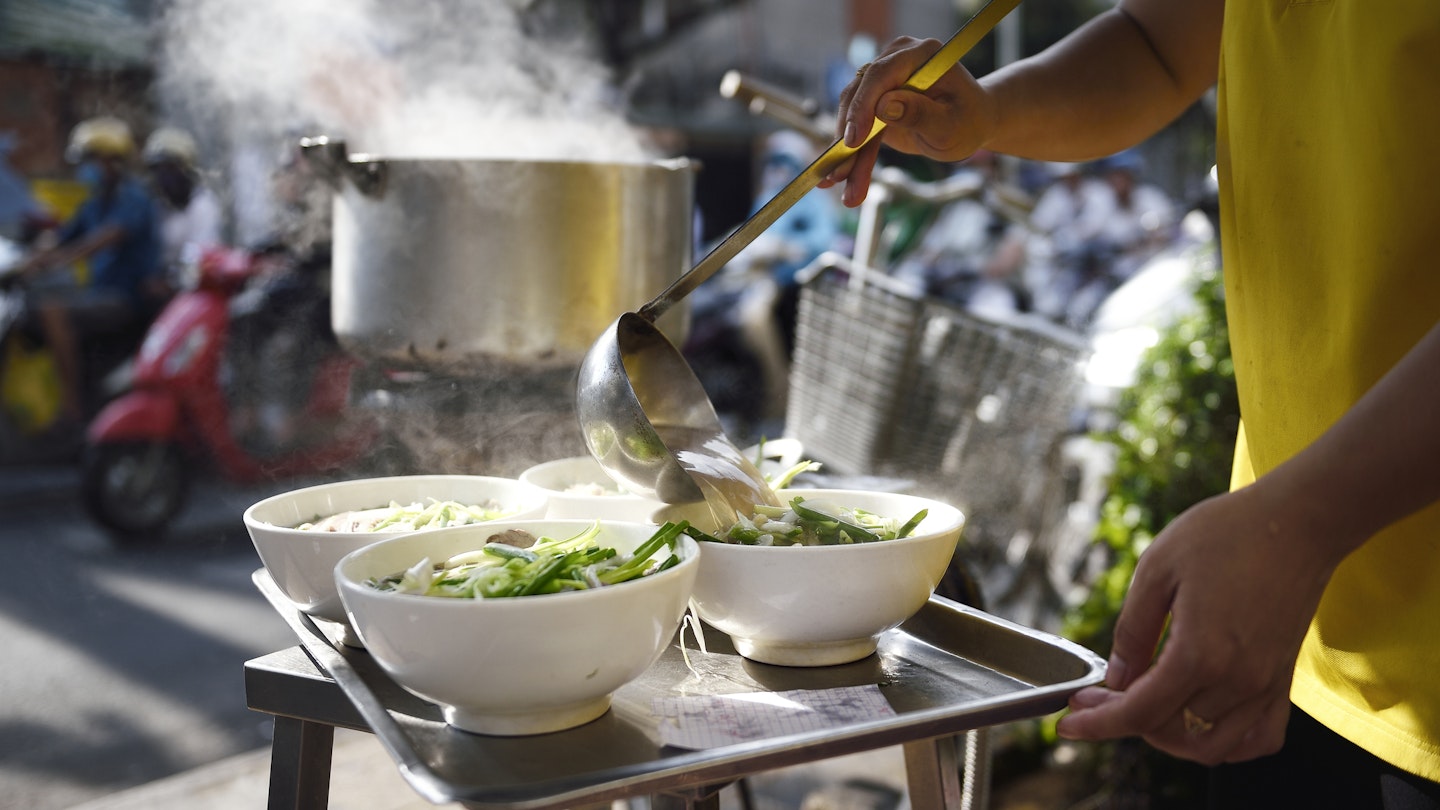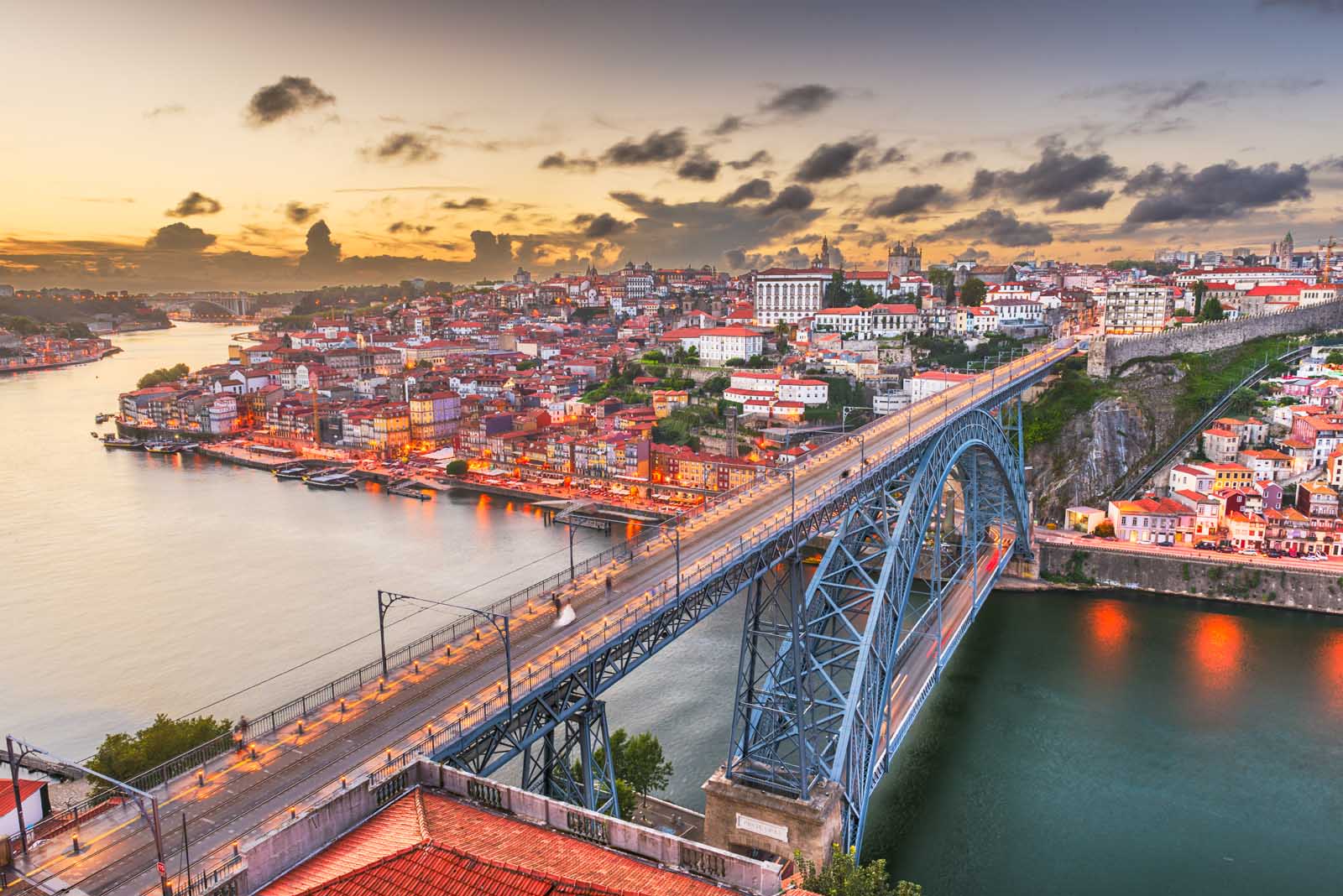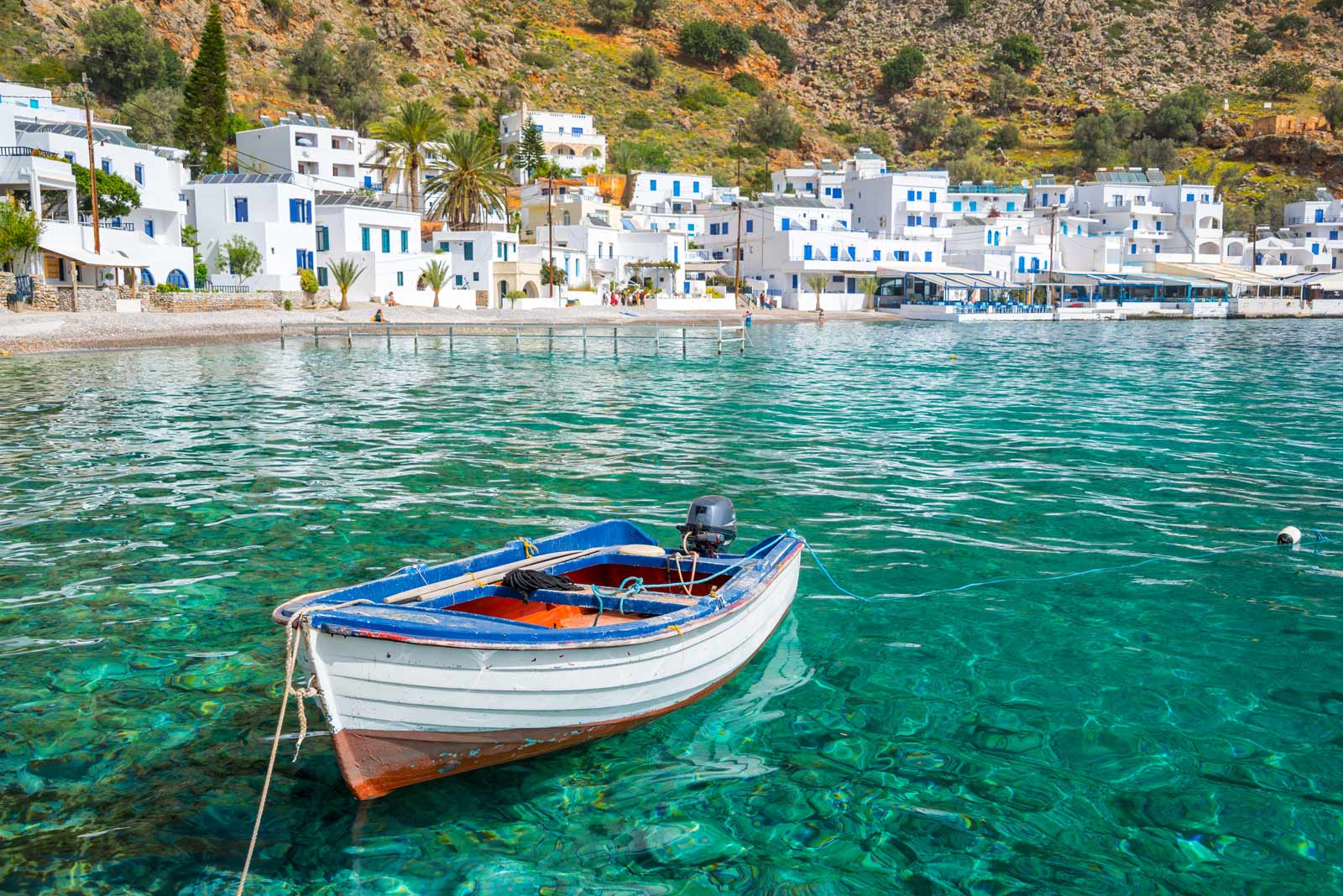Still known by its old name of Saigon for ease, Ho Chi Minh City (HCMC) is Vietnam’s southern metropolis – at times hectic, sometimes overwhelming but always worth exploring. The country’s most internationally-influenced and outward-looking city, it’s a key stop for travelers to Vietnam.
However, both domestic and foreign travelers sometimes struggle to orient themselves and find activities in a city that seems focused on business and entertainment geared towards in-the-know locals. Nevertheless, for those who appreciate observing the small rhythms of daily life and are keen to embrace international flavors and experiences, it’s an immensely rewarding destination.
There’s even plenty to see for free and the city is an easy hub for day trips to the Mekong Delta region. Here are the top things to do to get the best from Ho Chi Minh City.

1. Spend a morning observing park life in Ho Chi Minh City
Saigon is at its most peaceful and friendly early in the morning. To beat the stifling midday heat, locals wake up early and attend to strenuous activities before the sticky humidity builds. This means that during the early hours, from 5am until 9am, the city’s parks are filled with energy.
Walkers, runners, dance groups, exercise clubs, badminton players and groups simply gathering for a friendly chat populate green spaces across the city. Tao Dan Park in District 1 is a great spot to soak up this inviting atmosphere. It’s also a great place to try the city’s strong phin (filtered) coffee, sold by stalls and bicycle vendors around the park.
While the demographic in Tao Dan skews toward older citizens, you can catch a glimpse of more youthful early birds on the sidewalks surrounding the Notre Dame Cathedral and Central Post Office, where enjoying ca phe bet or “pavement coffee” is the favored activity. Sitting on plastic stools or simple tarps and sipping strong coffee before the sun has a chance to menace the streets is a quintessentially Saigon thing to do.
This area comes to life at night as well, with fresh coconuts and sugary soft drinks replacing the coffee. Snack vendors selling a variety of traditional and trendy Vietnamese snacks make frequent passes through the area.
Detour: To the side of the Central Post Office and across from Notre Dame Cathedral is HCMC’s Book Street where many of the nation’s top publishers have storefronts. While mostly specializing in books in Vietnamese, some have English-language sections, with titles focusing on Vietnamese history and culture as well as translated fiction and writing-related souvenirs.

2. Learn and reflect at the War Remnants Museum
The War Remnants Museum is included in most Saigon tourism itineraries for good reason. The American War, as it’s known here, is little discussed in forward-focused modern Vietnam, but this thought-provoking museum will help you understand the many tragedies suffered and atrocities committed, as told by the victims. While occasionally heavy-handed, it does a remarkable job of revealing the painful realities of the war, including the My Lai massacre and the prison camps on Phu Quoc and Con Dao, using photographs and artifacts.
While the museum’s focus is primarily on the activities of America and its allies, it also features material related to the French colonial period as well as past conflicts with China. A visit can be somber and not always easy, but it’s critical to understanding Vietnam today, and you’ll emerge with a new perspective on the stories you may have heard previously about the war.
3. Go sightseeing by water taxi
Introduced in 2017 as a practical method of public transportation, HCMC’s Water Taxi service provides an opportunity to appreciate Saigon from a novel vantage point and enjoy a cruise on the Saigon River. From the Bach Dang Warf in District 1, boats meander along the river, passing such notable sights as Landmark 81 and surrounding Central Park. The ride offers glimpses into the private yards of Thao Dien’s opulent villas, as well as views of some of Binh Thanh’s more humble neighborhoods.
Travelers curious about the city’s less-visited neighborhoods can stop off at five stations to explore. The Thanh Da neighborhood, with its long riverside park and market, provides a good opportunity to immerse yourself in local life. Otherwise, enjoy a round trip and just relax with shaded seats and fantastic views on the 100-minute ride.
Planning Tip: The last trips each evening offer lovely sunset views, while trips between 11am and 3pm can be uncomfortably sunny. Tickets (15,000d one-way) often sell out, particularly on weekends, so advance planning is advisable to secure your spot.

4. Savor snails (and more) in District 4
A district once known for thugs and gangsters, District 4 has transformed into a playground for street food aficionados, particularly known for snails. Vinh Khanh Street is a top spot for seafood, with countless restaurants such as Ốc Oanh (534 Vinh Khanh) and Quán Ốc Sáu Nở (128 Vinh Khanh) bustling with diners at plastic tables savoring oysters, grilled shrimp, crab, and snails with various dipping sauces.
If a restaurant is sold out of any specific dish, you might spot chefs rushing to a neighboring restaurant to satisfy diners’ demands, following a complex reciprocity system.
Local Tip: The best way to choose a restaurant here (or anywhere in the city) is to observe which spot attracts the most local diners.
5. Take in the sights, scents, and tastes of Ho Thi Ky Flower Market
Wandering through any market in Southeast Asia brings a vibrant array of sights, smells, and tastes, and Saigon’s marketplaces are no exception. Different markets in the city have different specialties, but one of the most enjoyable is District 10’s Ho Thi Ky Flower Market (Hem 52 Ho Thi Ky, Ward 1, District 10) which serves as the city’s fresh flower hub. Strolling past storefronts with flowers pouring out onto the streets provides sensory bliss and a vivid introduction to the nation’s botanical industry.
The area around the flower market is home to a large Cambodian community, and the section devoted to food features delicious Khmer treats such as noodles flavored with prahok (Khmer fermented fish paste).
Planning Tip: Early morning is the best time to witness brimming displays of fresh flowers, while the evening is when the food stalls are most active. Unless you have a local payment app on your phone, bring cash as bank cards are rarely accepted for flowers or food.

6. Check Out Vietnamese modernist architecture
While the legacy of the French colonial period is evident in Saigon’s nostalgic architecture, a lesser-known local style pervades as well. Developed in the mid-20th century, Vietnamese modernism was inspired by the global modernism movement, but it includes uniquely Vietnamese elements, taking into consideration the tropical climate and local cultural preferences.
Exemplified by buildings such as the Reunification Palace, the General Sciences Library, the VAR building, and countless tube houses and apartment blocks, this style emphasizes double-skin facades with ornate geometric patterns, overhanging rooftops, and mosaics, along with a hint of the Brutalism that frequently characterizes the style in other countries. Once you familiarize yourself with the look and feel of Vietnamese modernism, you’ll find yourself noticing it everywhere.
7. Fly kites and sample local snacks in Thu Thiem
Making good use of prime real estate inundated with new developments, locals gather in District 2’s Thu Thiem area at sundown to fly kites. While some enthusiasts bring their impressive dragon kites and classic Vietnamese designs, others can purchase simpler versions from local vendors.
You’ll also encounter a variety of street foods such as fried corn and local sausages, alongside refreshing sugar cane juice, fresh coconuts, and soft drinks. A late afternoon visit is a relaxed and affordable way to experience the city as local families do. Grab a plastic stool, enjoy the cool breeze, marvel at the colorful kites adorning the sky, and savor the simple joy of families embracing their limited hours of free time to relax together.
8. Shop for local creativity
While Saigon has an emerging luxury goods scene and markets sell cheap crafts and souvenirs, the real energy comes from the city’s young designers. Nurtured by the internet and influenced by their surroundings, local creatives produce a diverse range of clothing designs, prints, art books, and other unique items. District 1 offers a great introduction to this fashion scene, with many small shops within the New Playground complex at 26 Ly Tu Trong and the adjacent former apartment complex.
Another fantastic place to sample the local creative scene is OhQuao. Specializing in prints, stickers, and gifts, it operates in two locations: one in District 3 and another in the Thao Dien ward of District 2.
Detour: Thao Dien Ward is known as Saigon’s expat bubble, offering numerous bakeries, upscale cafes, clothing boutiques, art galleries, and fine dining opportunities. Visit Cafe Slow for delicious artisanal coffee from Vietnamese farmers; try Soma for a tasty vegan-friendly lunch; hit Mami Cocktails for a chilled-out vibe with generous cocktails; and explore Breadventure for unique pastries.
9. Check in with Saigon’s Japanese community
While relatively small, Saigon’s Japanese community has made a significant impact on the city. The bustling “Japan Town” off Le Thanh Ton can be overwhelming and somewhat seedy, so it’s advisable to head to the Pham Viet Chanh neighborhood in nearby Binh Thanh District to indulge in authentic Japanese food and ambiance.
There, cozy izakaya and sushi bars cater to both Japanese expatriates and locals, alongside trendy establishments such as Birdy, Khaoi, and Lozzi. While lacking the frenetic energy of Japan Town, this area provides a great venue for a night out characterized by excellent food and the chance to mingle with a diverse selection of nightlife-loving Saigon residents.

10. Take in a show at the Opera House
Saigon’s Opera House is not only one of the city’s most impressive historic buildings, but it’s also a prime entertainment and cultural venue. Built by the French at the turn of the 20th century, it has served various functions over the decades, including temporary housing and a venue for the National Assembly.
This history is worth exploring further, and the AO Show at the Opera House begins with an overview of the building’s long legacy, highlighting its impressive French design, with a façade modeled after Paris’ Petit Palais. This history lesson is followed by a breathtaking performance that combines gymnastics, modern dance, and aerial ballet with a dash of cultural myth-making.
For visitors more interested in classical music, consider attending one of the frequent Ho Chi Minh City Ballet Symphony Orchestra performances.
Local Tip: Despite the high outdoor temperatures, wear something warm because the Opera House can be quite chilly when the air-conditioning is on. Many theater-goers dress up, so consider wearing something nice to fit in with the crowd.




